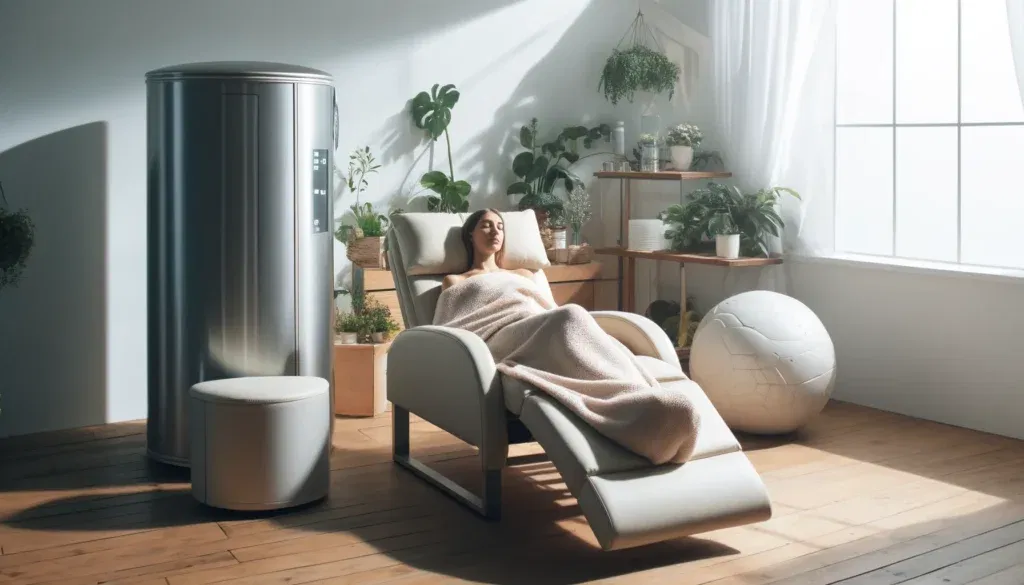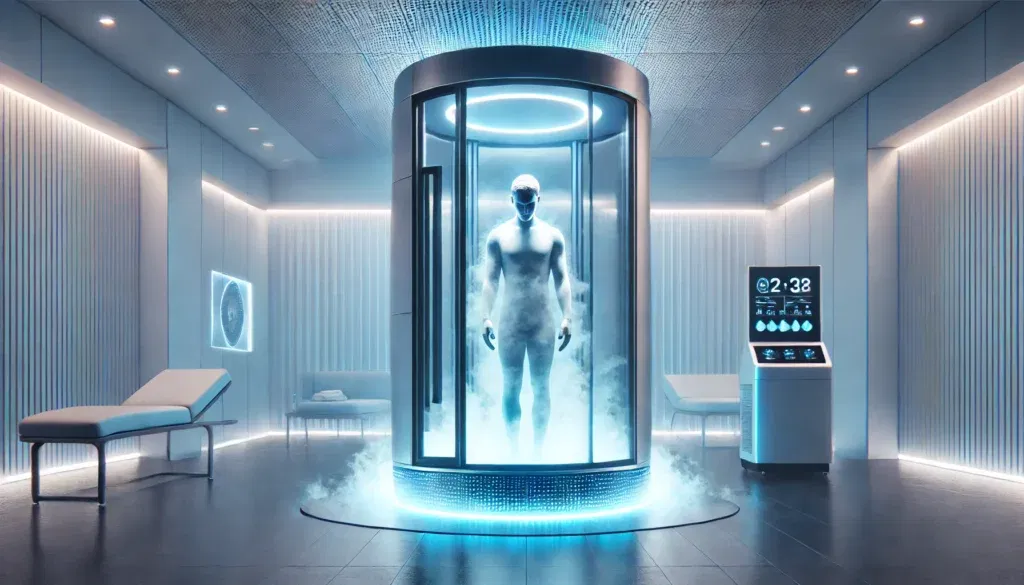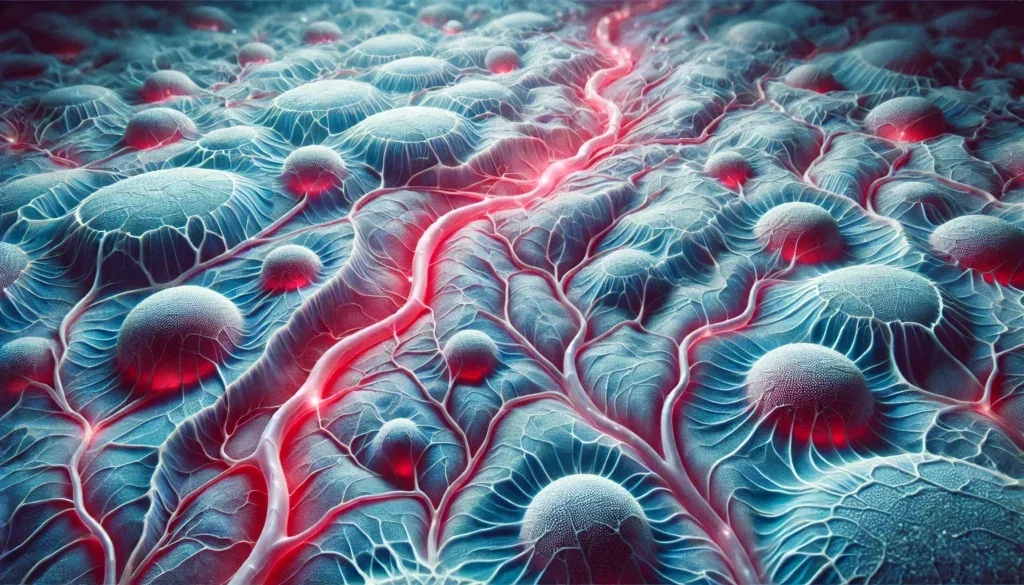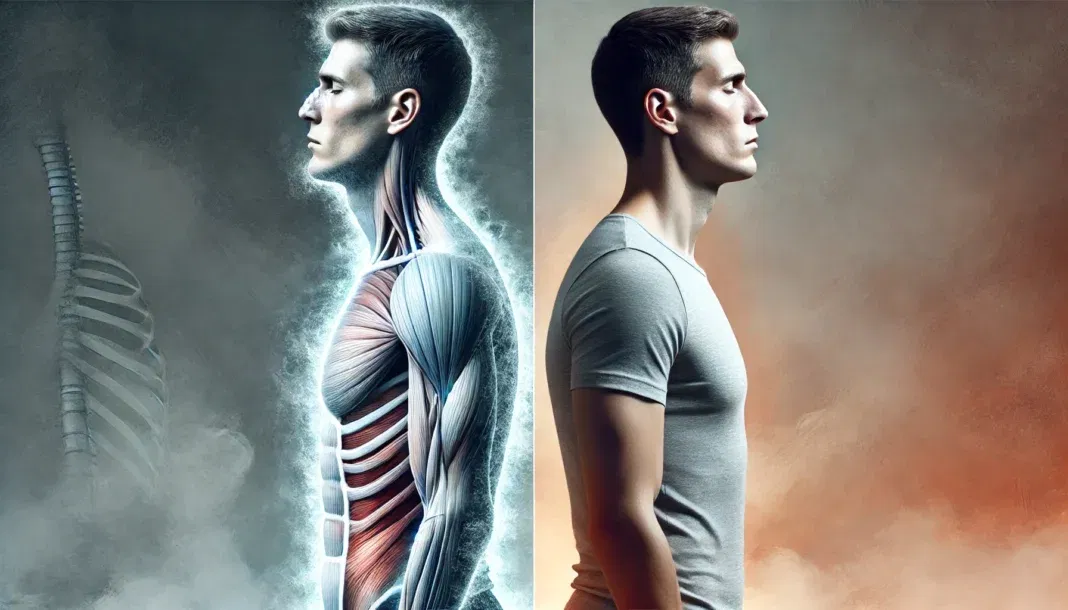In recent years, the pursuit of optimal health, performance, and recovery has driven a surge in interest toward biohacking therapies that push the boundaries of conventional wellness strategies. Among these, whole body cryotherapy has emerged as one of the most intriguing—and polarizing—technologies. Originally developed as a treatment for rheumatoid arthritis in Japan during the late 1970s, it has since evolved into a globally popular method among athletes, wellness enthusiasts, and longevity seekers alike. The use of high pressure cryotherapy in particular has added a new dimension to this modality, combining intense cold exposure with compressed air or nitrogen gas delivery systems to maximize therapeutic outcomes. This article takes an in-depth, scientifically grounded look at what individuals can expect from whole body cryotherapy before and after treatment, with a focus on how high pressure cryo methods are redefining human optimization.
You may also like: How Does Cryotherapy Work? Exploring the Science, Benefits, and What to Expect After Treatment
The Physiological Foundations of Cryotherapy
To understand the effects of whole body cryotherapy, it is important to first grasp the physiological processes triggered by extreme cold exposure. Cryotherapy involves briefly exposing the body to temperatures as low as -200°F (-129°C) in a cryochamber. Typically, sessions last between two and four minutes, just enough time to provoke a strong but controlled cold shock response without causing harm. This exposure prompts vasoconstriction, a narrowing of blood vessels that directs blood flow away from the skin and extremities to protect internal organs. Simultaneously, the sympathetic nervous system becomes activated, releasing a surge of catecholamines such as adrenaline and noradrenaline.
This biochemical cascade results in a temporary elevation of heart rate, increased alertness, and enhanced oxygen delivery to tissues once rewarming begins. As blood vessels dilate post-exposure, a phenomenon known as reactive hyperemia occurs, flushing the tissues with freshly oxygenated blood. Over time, repeated exposure can lead to adaptations that include improved circulation, reduced inflammation, enhanced lymphatic drainage, and even neurochemical changes linked to mood and cognitive enhancement. When high pressure cryotherapy is introduced, these benefits may be magnified due to the deeper penetration of cold stimuli and the ability to maintain more consistent thermal gradients across the skin.

Whole Body Cryo Before Treatment: Preparing for the Experience
Before stepping into a cryochamber, individuals must undergo several preparatory steps to ensure safety and maximize benefit. Pre-treatment guidelines typically include wearing dry, moisture-wicking clothing and protective gear such as gloves, socks, and ear coverings to prevent frostbite on extremities. It is also crucial to remove all metal jewelry and avoid any topical lotions or damp clothing, as these can increase the risk of skin damage during exposure.
From a physiological standpoint, hydration plays an essential role in preparing for a cryotherapy session. Proper fluid intake helps regulate core temperature and facilitates efficient blood circulation during the vasoconstriction and rewarming phases. While fasting is not required, it is advisable to avoid heavy meals immediately before the session, as the body will prioritize thermoregulation over digestion. Psychological preparation is equally valuable. Individuals unfamiliar with whole body cryo often benefit from brief education on what to expect during the session—including the intense cold and the sensation of skin tingling—which can help reduce anxiety and promote relaxation.
Expectations must also be calibrated appropriately. While many users report immediate feelings of invigoration and mood elevation following their first session, the most pronounced benefits of whole body cryotherapy before and after consistent use tend to accumulate over time. Users seeking relief from chronic inflammation, joint pain, or athletic fatigue often require multiple sessions before achieving noticeable improvements. In the context of high pressure cryotherapy, where air or nitrogen is delivered with greater force, preparation may also involve adjusting one’s position within the chamber to ensure even cold exposure across all body regions.
Psychological and Neurological Effects Post-Treatment
Following a cryotherapy session, individuals often describe a rush of endorphins accompanied by enhanced mental clarity and a sense of euphoria. This phenomenon is largely attributed to the activation of the hypothalamic-pituitary-adrenal (HPA) axis and the subsequent release of beta-endorphins and dopamine. These neurochemicals play a critical role in regulating mood, motivation, and reward pathways, offering a compelling explanation for the antidepressant-like effects reported in anecdotal and preliminary clinical studies.
Emerging research supports the notion that whole body cryo can exert a neuromodulatory effect, potentially improving symptoms of anxiety, depression, and sleep disturbances. By influencing levels of serotonin and norepinephrine, cryotherapy may provide a non-pharmacological means of enhancing mental wellness. High pressure cryotherapy appears to amplify these effects, possibly due to the more intense cold exposure eliciting a stronger neurological response. The rapid rewarming phase following a session also increases parasympathetic activity, helping the body transition into a state of relaxation and recovery.
Some users also report improved cognitive performance, including heightened focus and faster reaction times. These outcomes may be linked to increased blood flow to the brain and reduced neuroinflammation. While more randomized controlled trials are needed to substantiate these claims, the current body of evidence suggests that high pressure cryotherapy holds promise as an adjunctive tool for supporting mental clarity and emotional resilience, especially in individuals with high cognitive demands or stress levels.

Frequently Asked Questions: Whole Body Cryotherapy and High Pressure Cryo
1. Can whole body cryo help improve sleep quality over time? Yes, whole body cryo may support better sleep through its influence on the autonomic nervous system. By stimulating a parasympathetic rebound following the intense cold exposure, the body often shifts into a relaxed state conducive to deep, restorative sleep. The drop in core body temperature after a session mimics the natural thermoregulatory changes that precede sleep, helping signal the body to wind down. Additionally, the hormonal responses triggered by high pressure cryotherapy—especially elevated endorphins and lowered cortisol—can reduce anxiety levels that often interfere with falling asleep. While not a replacement for good sleep hygiene, it can serve as an adjunctive strategy for those experiencing stress-induced insomnia.
2. How does high pressure cryotherapy compare with traditional cold exposure techniques like ice baths? High pressure cryotherapy differs significantly from traditional cold therapies such as ice baths in terms of mechanism, duration, and physiological response. Unlike ice baths, which rely on conduction through water, high pressure cryo uses compressed nitrogen or refrigerated air to rapidly cool the skin via convection. This method avoids the discomfort and numbness associated with water immersion while achieving lower skin temperatures more efficiently. Furthermore, sessions are typically shorter—lasting only a few minutes—yet produce a profound sympathetic nervous system activation. Many individuals report that whole body cryo is more tolerable and less taxing on the musculoskeletal system than prolonged immersion in icy water.
3. Are there measurable differences in athletic recovery when using whole body cryo before and after workouts? Absolutely. Whole body cryotherapy before and after physical exertion can influence different recovery pathways. Using it pre-workout may increase mental alertness and reduce perceived pain, enabling a more productive training session. Post-exercise, whole body cryo appears to blunt the inflammatory cascade and reduce delayed onset muscle soreness (DOMS) by constricting blood vessels and limiting soft tissue swelling. The effects of high pressure cryotherapy may be particularly advantageous in high-volume training cycles, as its intensity enhances microcirculatory repair and neurochemical recovery. Over time, athletes often report less fatigue, better sleep, and faster return to peak performance when integrating cryotherapy into their routine.
4. What psychological benefits might users experience outside of improved mood? In addition to mood elevation, whole body cryotherapy may have subtle psychological effects that extend into areas like stress resilience, motivation, and social engagement. The acute cold exposure can foster a sense of accomplishment and mental toughness, which some users describe as confidence-boosting. For those dealing with emotional exhaustion or burnout, the invigorating nature of whole body cryo offers a temporary reset that encourages a shift in mental perspective. High pressure cryotherapy, due to its heightened intensity, can create a pronounced post-session euphoria that feels both energizing and calming. This psycho-physiological boost may contribute to improved workplace productivity and interpersonal relationships.
5. How long do the effects of a single cryotherapy session typically last? The duration of benefits from a single session of whole body cryo can vary widely depending on individual physiology and lifestyle. Immediate effects like mood elevation and reduced muscle tension may last several hours, while metabolic and inflammatory modulation can extend into the following day. High pressure cryotherapy tends to induce a longer-lasting thermogenic response due to its deeper tissue impact and more consistent cold delivery. For chronic conditions such as joint pain or systemic inflammation, effects may become more pronounced and sustained with repeated use. It’s important to view cryotherapy as part of a cumulative wellness strategy rather than a one-time fix.
6. Are there any social or behavioral trends associated with the growing popularity of cryotherapy? Yes, cryotherapy has increasingly become embedded in the broader wellness and performance culture, particularly among professionals, fitness enthusiasts, and tech-forward biohackers. Its adoption reflects a shift toward proactive, experiential self-care, often replacing or supplementing pharmacological solutions. Social media has also contributed to the growth of whole body cryo, with influencers showcasing their post-session glow or recovery routines. The emergence of cryo lounges and boutique recovery centers speaks to a demand not just for results but also for a social experience. As high pressure cryotherapy becomes more mainstream, it may start to influence workplace wellness programs and community health initiatives.
7. What are some lesser-known long-term benefits of consistent whole body cryotherapy use? Over time, consistent use of whole body cryotherapy has been linked to subtle yet meaningful physiological and psychological shifts. Some users report improved skin tone and elasticity, possibly due to enhanced collagen production from repeated vasoconstriction and dilation cycles. Others notice more balanced hormonal rhythms, including regulation of menstrual cycles and improved libido, although more research is needed in these areas. High pressure cryotherapy may further support metabolic efficiency by boosting brown adipose tissue activity, contributing to better energy balance. Additionally, the ritual of regular cryo sessions can reinforce commitment to overall health goals, fostering discipline and mindfulness in other areas of life.
8. Can cryotherapy be safely used alongside other biohacking or regenerative treatments? When approached mindfully, whole body cryo can integrate well with a wide range of regenerative practices, including red light therapy, intermittent fasting, PEMF (pulsed electromagnetic field) therapy, and hyperbaric oxygen. However, it is essential to coordinate timing and dosage to avoid overloading the body’s adaptive systems. For example, using cryotherapy immediately after red light therapy may dampen some of the cellular signaling pathways enhanced by photobiomodulation. High pressure cryotherapy, given its intensity, should be scheduled strategically around other high-impact modalities. Consulting with a knowledgeable practitioner can help design a complementary regimen that leverages the unique strengths of each intervention.
9. How might individual differences affect the outcome of whole body cryo treatments? Responses to whole body cryotherapy can vary significantly based on genetic predisposition, fitness level, stress load, and even personality traits. People with higher baseline inflammation or sedentary lifestyles may experience more dramatic improvements early on, while elite athletes might notice more nuanced gains. Sensitivity to cold, emotional reactivity, and hormonal profiles also play a role in determining perceived benefits. High pressure cryotherapy can sometimes exaggerate these individual responses, offering a more intense stimulus for those who thrive on extremes. Personalization—through trial and observation—is key to maximizing results, and tracking metrics like HRV (heart rate variability) can help guide optimal usage.
10. What future innovations are emerging in the field of cryotherapy? The next frontier in cryotherapy includes smart cryochambers with biometric feedback, AI-driven session personalization, and synergistic technologies such as vibration plates or breathwork cues built into the chamber environment. Researchers are exploring how high pressure cryotherapy could be paired with nanotechnology or peptide protocols to target tissue repair more precisely. Another exciting avenue is the integration of virtual reality during sessions to enhance psychological relaxation and reduce cold-related anxiety. Whole body cryo is also being investigated for potential use in neurodegenerative disorders, where its anti-inflammatory and neuroprotective effects might slow disease progression. As data accumulates, expect more medically integrated protocols and insurance-backed access to cryotherapy as a recognized wellness therapy.

Conclusion: Reflecting on the Transformative Potential of Cryotherapy
As the wellness and performance landscape continues to evolve, whole body cryotherapy remains a compelling option for those seeking evidence-based, non-invasive ways to enhance recovery, cognition, and physical performance. The integration of high pressure cryotherapy elevates this modality further by deepening the physiological response and potentially amplifying long-term benefits. From reducing systemic inflammation to supporting mood regulation and cognitive sharpness, the effects of whole body cryo before and after consistent use extend well beyond temporary relief.
What makes this therapy particularly appealing is its synergy with other optimization strategies—whether paired with fitness, mindfulness, or nutritional interventions, cryotherapy can serve as a catalyst for systemic resilience and longevity. However, as with any emerging modality, its true value lies in personalized application, realistic expectations, and a foundation rooted in scientific credibility. Continued research and clinical trials will no doubt deepen our understanding of how best to harness its full potential. For now, the promise of cold-based therapy offers a bold frontier in the art and science of human optimization.
cryotherapy benefits for athletes, cold exposure therapy, cryo chamber experience, biohacking recovery methods, anti-inflammatory recovery techniques, sports injury recovery tools, neurobiological effects of cold, mental clarity through cold therapy, boosting endorphins naturally, recovery optimization strategies, holistic wellness practices, immune response and cryo, mood enhancement therapies, performance recovery routines, natural pain relief methods, stress reduction through cold, athletic performance tools, inflammation and recovery science, high-tech wellness trends, non-invasive therapy solutions
Further Reading:
Whole-body cryotherapy: empirical evidence and theoretical perspectives
Cryotherapy: the Chilling Effects of Extreme Cold on Health and Wellness
Disclaimer
The content provided by HealthXWire is for informational purposes only and should not be construed as medical advice, diagnosis, or treatment. While we strive for accuracy, the information presented on this site may not reflect the most current research or medical guidelines. Always seek the advice of your physician or other qualified health provider with any questions you may have regarding a medical condition. HealthXWire does not endorse, recommend, or guarantee the efficacy of any products, services, or treatments mentioned on this site. Users should not disregard professional medical advice or delay seeking it because of something they have read on HealthXWire. HealthXWire is not liable for any damages, loss, or injury arising from reliance on the information provided herein.



